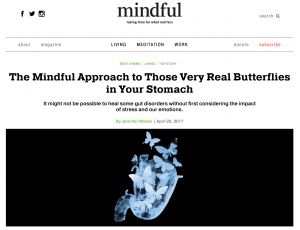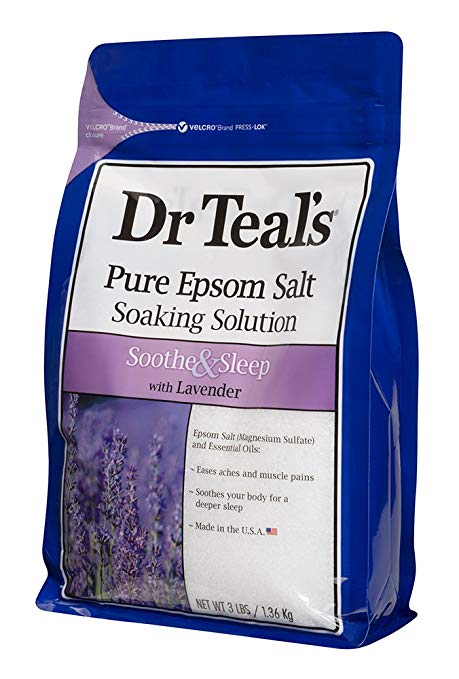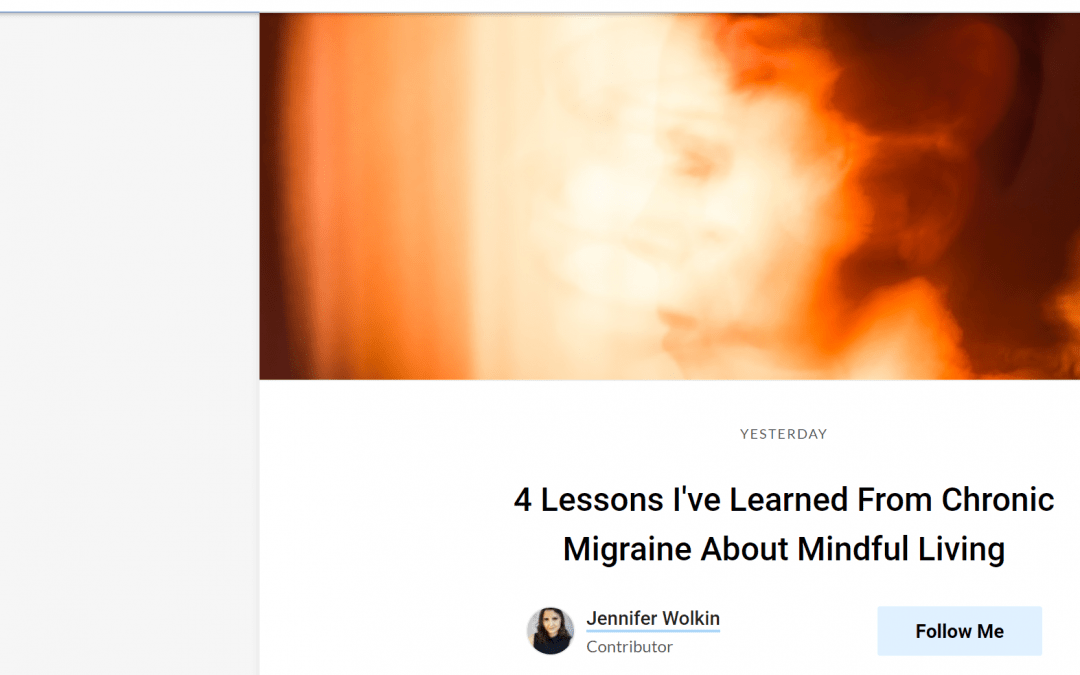
by Jennifer Wolkin | May 4, 2020 | Mindfulness, Stress, Wellness
I am writing to you at this unprecedented time in our history. A time of collective, global trauma. We’re scared. We’re vulnerable. We’re mentally exhausted. People are saying to stay positive, but I want to validate your emotions, you are safe from the catchphrase ‘good vibes only’ here.
There is so much beyond our control these days. As humans, we don’t like uncertainty at the best of times, at baseline. We thrive on timelines and surefire deadlines. So we are all trying our best to find equanimity, mental calmness, amidst this uncertainty.
It is my hope that these 17 #StayCovidCalm actionable tips, that you can take today, will help you focus on treating yourself with kindness during this difficult time. You don’t have to have a productive pandemic, just take care of yourself to the best of your abilities, and that’s more than enough.
Set media/news boundaries:
Be very discerning of the media you are consuming (stick to known reliable sources), and set boundaries around when and how you consume media. I’d recommend not to watch it right before sleep, and to set specific times during the day to read or watch and have a cut-off time.
- It won’t help to check news every 15 minutes. This won’t lead to any more productive action, and will only serve to induce panic. Keep yourself updated with ONLY important, helpful facts from well-informed sites. Saturating on social media can literally overwhelm our brains.
- It’s also very reasonable to set boundaries with people who are sending you information. If someone is texting you with information every hour, and it’s creating anxiety, do gently let that person know that this isn’t serving you. Take appropriate action.
- Keep prepared, because it is the mindful thing to do for oneself and society at large. This means do what is recommended with as little worry as possible that you’re not doing enough. If you’re doing what’s recommended, then you are doing enough.
Allow yourself to feel all the feels:
It is not only okay, but a necessity to allow ourselves to experience the gamut of emotions we encounter, and not just try to stay positive and feel “good vibes only,” which sometimes is a message we confront on social media. Allowing ourselves to feel all we are feeling, without shame or judgment, and then seeing that we can move through these emotions, is essential for mental health right now. Our mind space is big enough for all the feels, even seemingly contradictory ones. In fact, allowing space for them is healthy. I call this “feelings the ands”, as in, “I feel this AND this.”
Practice gratitude:
while it is important to allow yourself to have all the feels, it can ALSO help to take a moment to consciously express gratitude at least once each day and to take perspective. So, before you go to sleep, or after waking up, see if you can list and reflect upon three things in that very moment you feel grateful for and, if needed, you can use the same three each time. Examples include: loved ones, health, healthcare providers, leadership during this time, roof over one’s head, groceries, grocery shop personnel, the sun coming out, a breeze, the warming weather.
Create structure and routine as much as possible:
At baseline our brain’s like a sense of routine, it helps maintain perceived control, and our brain veers towards “order”, especially during a time of great uncertainty. Of all times, this is a time to build in some kind of routine to your day. This could mean going to sleep and waking up at the same time. This could mean doing virtual work in the same space every day. This could even look like a scheduled afternoon walk, as long as we are abiding by social distancing.
Virtually connect:
Social connection is paramount during this time. Even if it’s not your ideal to connect virtually, give yourself a healthy push to reach out to be in touch with and be held by a community. Even if we don’t love it, we must push ourselves to connect with others – social connection is key and crucial, even virtually. It may not be ideal but it is something that will keep you safe and healthy.
Find creative outlets:
Creative expression connects us back to ourselves. It also allows us to use our mind in ways that promote a sense of freedom in a time when we are feeling locked down.
Journal:
Record history from your first-person perspective if this will help you create a sense of purpose. During so much unknown, having a call to action that creates a sense of meaning can go a really long way towards lifting depressed feelings.
Pray:
Reach out to whatever you believe is out there that is greater than you. This allows us to surrender some of the burden that we might feel to have all the answers, and the need to problem solve and fix what is beyond our power to do so.
Connect to something greater/give back:
Asking how can I be of service often helps us get outside our own selves and can soften depression and anxiety. It gives us a sense of purpose, to create meaning at a time when not much seems to make sense.
Focus on what we can control vs. what we can’t:
There is so much we can’t control now, and also, at the same time, we have been given guidelines to adhere to. If we allow ourselves to follow what’s recommended, and surrender into the knowing that we can’t control much more, we might feel some anxiety relief.
Practice radical acceptance:
Practice radically accepting the present-moment for what it is. This doesn’t mean we roll over and passively resign to whatever circumstances we are experiencing. What it means is totally and completely accepting that the reality of this moment, is, in fact, the reality of this moment, and that to resist present-moment reality is not only impossible, but creates stress. Radical acceptance is a practice based on the idea that although we can’t control for the most part how life unfolds, we can, in fact, control how we perceive or react to life unfolding. Fighting against reality, even if said reality is painful, is likely to cause suffering beyond that of the reality itself.
Exercise:
Both weight training and cardio have mental health benefits. This can mean jumping jacks or jogging in place, or using weights you have at home while following along to a YouTube guided workout. Many gyms are also doing virtual sessions. Weight training exercise is a life force and a crucial part of mind-body-brain hygiene. Exercise has been shown to raise serotonin levels, the neurotransmitter that many antidepressants focus on producing. Exercise can also elicit endogenous endorphins, the body’s natural painkillers, and of course, bring more oxygenated blood to the brain.
Stretch:
Just as crucial as exercise is, so is stretching regularly, to ease tension and stiffness, especially if we are sitting more while in quarantine. Particularly, try to make time to stretch my psoas muscles. They are the only muscles that connect the spine to the legs, attaching from the 12th thoracic vertebra to the 5th lumbar vertebra through the pelvis and down to the femurs. Needless to say, the psoas muscles, therefore, play a crucial role in one’s core structural wellness, especially the psoas major, the biggest muscle of the group.
- The absolutely mind-blowing understanding regarding the psoas muscles though, is that they have been actually touted as instrumental to one’s mental well-being as well! The psoas muscles flank the diaphragm and the many connections between the psoas muscles and the diaphragm literally link these muscles to our breath, which is sensitive to fear. When we are in a state of fear, the breath is shallow and constricted, and the diaphragm isn’t being used to take deeper, calming breaths. The psoas feels this, and holds the fear. This means that if we are in a constant fight or flight mode, due to chronic stress, then our psoas muscles are also chronically stressed and constricted. This would also mean that an over-constricted psoas, caused by poor posture for example, could actually elicit fear.
- So, after hours and hours of sitting in a position that constricts our psoas muscles, it’s no wonder we have a visceral feeling of tension that seems to envelop our minds, bodies, and brains. Stretching my psoas is literally like a sigh of relief. There are videos online to help guide in how to find the psoas and how to stretch it with the most significant impact.
Maintain physical wellness:
Mental health and medical health are inextricably intertwined.
- Eat regular meals: Try to eat set meals to nourish yourself. If you tend to overeat during a stressful time, see if you can take a step back, and self-soothe with other more adaptive techniques like breathwork, or distracting with a conversation with a friend. If you do eat more than you want, don’t judge yourself. This is an ongoing practice.
- Limit caffeine: If you tend to panic, watch your coffee intake. Stick to one cup a day or less.
- Support your immune system through diet: Of course, ask your general practitioner, certified health coach, nutritionist or functional medicine doctor before you make any changes to your regimen. Generally speaking, I suggest whole grains, high protein, berries, leafy greens, including spinach and kale.
- Decrease processed sugar: Processed sugar is highly inflammatory, and does not support immunity, and can also lead to mental health challenges.
- Supplements: I defer to your general practitioner here too, however, generally speaking Vitamin C, D3, and Zinc has been suggested to boost immunity. Turmeric and ginger can also play an anti-inflammatory role.
Maintain mental health care:
Maintain all regimens you were usually doing for mental health. Sometimes in crisis we let things slide, but please continue your psycho-pharmacology regimen if you have one. If you have a therapist, connect virtually. If you don’t have a therapist, you can still find one during this time, many are taking new patients even virtually. Psychologytoday.com has a search engine for therapists in your area. Also, talkspace.com and betterhelp.com are great options.
Be gentle, be gentle, be gentle:
I listed a lot of things. But ABOVE all, be gentle with yourself. Find adaptive ways to cope, and also, if you are just able to get by and breathe and do the best you can, it’s okay. There is no end to the beginnings we can take. In any moment, we can try to engage in these coping skills, and if the next moments they seem harder, we can try again in another.
Practice mindfulness and mindful living:
Whether we use an app to help guide us through a mindfulness practice, engage in deep diaphragmatic breathing, incorporate mindfulness into any daily activity, or living more mindfully, this is a way to 1. Sit with uncomfortable emotions without needing to escape them 2. Offer oneself gentleness, compassion, and nonjudgment 3. Elicit the relaxation response.

by Jennifer Wolkin | Jul 5, 2018 | Blog, Brain Health, Mindfulness, PTSD, Wellness
On the evening of March 26th, 2012, Yvonne Kent Pateras suffered a massive hemorrhagic stroke, leaving her unable to speak or move. She also experienced “locked-in” syndrome. These are Yvonne’s own words regarding the traumatic stroke she experienced:

“I had the experience of knowing what was happening to me from the beginning. I felt a sinus rhythm in my head becoming louder. I tried to center myself, but it was over before I had time to act. I opened my mouth to shout for help-the noise that left my body was the most primordial noise. My beautiful voice had been replaced by the noise of a wounded beast. I wouldn’t hear another word for the next for 3 months. I knew that I had not only suffered a stroke, I was paralyzed and locked in. I couldn’t tell my family that I knew what was going on. I tried to just keep my neurons busy and alive. I did simple counting exercises to stay calm and occupied-to keep my adrenaline levels under control. I was determined to survive.”
After four months in the hospital, to everyone’s surprise, and with extraordinary courage, Yvonne was able to regain speech and movement. Yet, in a span of approximately ten months, she suffered three ischemic strokes, and another hemorrhagic one. Since different kinds of strokes require different treatments, medical care was challenging.
Yvonne persevered. She said that recovery required “endless effort.” She can now walk without difficulty. She has a light speech impediment and lost some functioning in her right hand.
As we now know, with post-traumatic growth, trauma like this can often serve as a catalyst for a profound awakening to an emotional and spiritual transformation. Yvonne’s awaking came in the form of writing poetry.

“Following the stroke I went through a spell of re-learning, like being born again. Feelings were overpowering my mind’s concentration and understanding. Writing verses were facilitating the expression of my feelings. Publishing my work also gave me upmost satisfaction, particularly as the response by other stroke victims was so moving. Poetry takes the weight off my legs, gives me wings!!!”
You can find Yvonne’s poetry in her book, Stroke Journeys, by clicking on this link.

by Jennifer Wolkin | Apr 23, 2017 | Blog, Five to Thrive, Mindfulness, Relationships, Stress, Wellness
This blog post originally appeared on Mindful.org

An Early Account
In the 1950’s Dr. Thomas Almy, a prestigious gastroenterologist, snapped a picture of a live colon responding to the proverbial “butterflies in the stomach.”
Dr. Almy invited a student to take part in an experiment where he used a sigmoidoscope to look inside the student’s rectum and colon. A bystander complicit in the experiment said something about cancer of the colon. Upon hearing this, the student concluded that he must have cancer, at which time his colon started to change color, tense up, and contract rapidly. When the student was reassured that cancer was not his diagnosis, his colon regained its natural color, and relaxed.
This experiment paved the way for a deeper understanding of the visceral processes behind our gut-wrenching experiences. Getting butterflies before a big test or nausea right after a breakup: those feelings are much more than anecdotal. It’s a physiological reality that our emotions and stress physically impact our gut.
The Brain-Gut Axis and Stress
One of the major breakthroughs in understanding how the central nervous system (CNS) and the gut communicate was the discovery of the enteric nervous system (ENS). The ENS, sometimes called the “second brain,” is a complex system of about 100 million nerves found in the lining of the gut. Both of our brains, so to speak, are in constant dialogue and speak in many “languages” as they send signals to and fro via neural and endocrine pathways that collectively have been dubbed the “Brain-Gut Axis” (BGA).
The BGA plays a prominent role in our overall wellness, and there is significant evidence that it’s susceptible to stress. The route to BGA dysregulation has many avenues, all of which make the gut more vulnerable to disease.
Stress-induced changes in the physiological functions of the gut include changes in: gut motility, mucosal permeability, visceral sensitivity, gastric secretion, and the gut microbiota. Changes to gut microbiota is called dysbiosis, which may lead to disease. Many of these stress-induced changes account for the symptoms seen in many gastrointestinal disorders.
Functional Gastrointestinal Disorders (FGIDs): When the Gut Acts Up
In my clinical practice, evidence of the BGA is most visible in the functional gastrointestinal disorders (FGIDs): cases when the gut is acting up and there’s no obvious physical cause, like a tumor or bowel obstruction, for example. This does not mean that an FGID is all in one’s head, however. A more precise conceptualization is that stress influences the actual physiology of the gut. In other words, psychological factors can impact upon physical factors, like the movement and contractions of the GI tract, causing inflammation, pain, and other bowel symptoms. These disorders often significantly reduce quality of life.
FGIDs include the better-known irritable bowel syndrome (IBS) and the lesser-known small intestinal bacterial overgrowth (SIBO). Given their functional nature, they continue to be difficult to treat, and often require GI doctors to use multiple treatment modalities and make referrals to other clinicians, including psychologists.
A Vicious Cycle
To be clear, the brain-gut connection is complex. For one, it is bidirectional; just like a stressed brain sends signals to the gut, a troubled gut sends signals to the brain, putting someone at greater risk for anxiety and other neuropsychiatric difficulties. Parsing which came first, the stress or the gut distress, becomes challenging and most often this bidirectionality between enteric and central nervous systems is a vicious cycle of great discomfort.
Just like a stressed brain sends signals to the gut, a troubled gut sends signals to the brain, putting someone at greater risk for anxiety and other neuropsychiatric difficulties.
On top of that, many of the FGIDs become chronic conditions, which pose a stressful physical and psychological burden. Many of the patients I treat come see me because having a disorder like IBS primes them for stress that maintains the original symptoms. For example, while stress is a clear player in the origin of FGIDs, “gut-focused” thoughts, emotions, and behaviors start to create stress that reinforces the underlying pathophysiology (i.e., slows motility, visceral pain). For example, my patients with FGID have become hyper-vigilant of their heightened visceral pain and then begin to catastrophically appraise their abdominal sensations. Also, their quality of life starts to significantly decrease, many times leading to anxiety and depression.
Many of the patients I treat come see me because having a disorder like IBS primes them for stress that reinforces the original symptoms.
A SIBO Story
I’ve learned about the FGIDs firsthand. I have a deeply personal connection to the BGA, and it serves to enhance my professional passion and expertise on the subject. In the winter of 2013, I experienced a feeling of pressure in my stomach after every meal. I felt visceral pain, and it felt difficult to empty my bowels. My heart felt fiery. I wasn’t just bloated—I looked pregnant. I had a belly the size of six-month gestational equivalence.
I wasn’t just bloated—I looked pregnant. I had a belly the size of six-month gestational equivalence.
I was otherwise healthy, and thankfully so, and the onset of symptoms was anxiety provoking. After a multitude of tests ruled-out anything life threatening, I took a hydrogen breath test that my GI specialist said was indicative of small intestinal bacterial overgrowth (SIBO).
I had never heard of it before, so I began to just refer to myself as a “digestive mess.” It definitely felt like a mess, as SIBO had nonchalantly decided to go camping in my gut, like a pesky parasite sucking the life out of every ounce of normal flora to be found. Camping: as in pitching tents, starting fires, and sleeping in the dark hollows of my alimentary organs (i.e., my gastrointestinal tract).
This was my up close and personal reckoning with just how much stress was taking over my mind—and body. SIBO was a wake-up call to inspect my habitual patterns of thinking and behaving that were adding to my stress levels over time.
This was my up close and personal reckoning with just how much stress was taking over my mind—and body. SIBO was a wake-up call to inspect my habitual patterns of thinking and behaving that were adding to my stress levels over time. These patterns weren’t “bad” per se, they were just not serving my wellness. It is hard to pinpoint any one stressor, or any one pattern that contributed to SIBO. In retrospect, it was probably an accumulation of stress that I carried with me during a grueling postdoc. Postdoc was an extraordinary experience that afforded me first-class training. Yet, I pushed myself without taking the time to rest. I can still recall one of my supervisors saying that “postdocs” never get sick, or if they do, they sweat through it, and suck it up. All I could think then if I needed a break was “I am such a failure.” I think I carried this line of thinking with me as I embarked on the first phase of my career post-training. I kept going without rest, and if I needed a break I’d once again hear the stress-inducing voice in my head reminding me of what I thought was my inadequacy.
It is hard to pinpoint any one stressor, or any one pattern that contributed to SIBO. In retrospect, it was probably an accumulation of stress that I carried with me during a grueling postdoc. Postdoc was an extraordinary experience that afforded me first-class training. Yet, I pushed myself without taking the time to rest. I can still recall one of my supervisors saying that “postdocs” never get sick, or if they do, they sweat through it, and suck it up. All I could think then if I needed a break was “I am such a failure.”
SIBO was a wake-up call, albeit a very uncomfortable one. So uncomfortable that I began to resent my body, avoiding social engagements, and hyper-focusing on my symptoms. The heaviness I physiologically felt in my core became a psychological burden, and I became depressed, until I finally realized that by calling myself a “digestive mess” I was colluding in the maintenance of my pain.
4 Ways to Treat FGIDs Using the Mind
Since multiple components, including physiological, affective, cognitive, and behavioral factors are associated with FGIDs, an integrative approach to treatment is prudent. The research indicates that psychological interventions have been successfully applied. More specifically, a large number of randomized controlled trials suggest that cognitive behavioral therapy (CBT), biofeedback, relaxation techniques, and mindfulness meditation are effective psychological interventions for FGIDs.
1) Cognitive Behavioral Therapy
Cognitive Behavioral Therapy is based on the idea that sometimes people engage in habitual thinking patterns that are founded on a skewed perception of their experiences or unhelpful, “distorted” thinking. It’s an inquiry-based approach that asks people to take notice of their mood changes and the habitual patterns of behavior they engage in.
CBT is the most studied psychological intervention vis-à-vis FGIDs, and most studies were conducted with IBS populations. Many people with IBS engage in unhelpful thinking styles related to their actual symptoms, which then impact upon their moods and behaviors. For example, imagine a scenario during which someone with IBS is certain that eating out in public means they will absolutely have diarrhea. The thought creates anxiety, which might actually lead to autonomic arousal that could potentially trigger diarrhea. Eating out is now linked to having diarrhea and so eating out is likely avoided. CBT treatment would first be geared toward helping someone identify this pattern of thinking, feeling, and behaving. Then it would be utilized to help someone learn to challenge this unhelpful thinking and develop healthy active coping skills.
One study conducted over twenty years ago focused on the impact of CBT on IBS by randomizing 34 patients to eight weeks of cognitive therapy, a self-help support group, or a waitlist control. The results indicated that post-treatment the cognitive therapy group showed a significant reduction in gastrointestinal symptoms, as well as significant improvement on measures of depression and anxiety when compared to both the support group and waitlist control paradigms. These results were maintained at a three-month follow up.
A recent study, published in January 2017, looked at the effects of a 12-week course of face-to-face CBT on 18 subjects with IBS. Results indicated a decrease in self-rated visceral sensitivity, as well as associated psychiatric symptoms. The authors of the study attributed the results to increased ability to cope with IBS symptoms.
2) Relaxation Techniques
In 1975, Herbert Benson, a physician at Harvard, introduced the concept of the relaxation response. It is the physiological opposite to the fight or flight response. In this way, stress management can be achieved by dampening the effects of the sympathetic nervous system’s “fight or flight” arousal mechanisms by activating our parasympathetic nervous system through relaxation techniques.
Research has suggested that practices like meditation, yoga, and prayer, which elicit the relaxation response, alleviate stress and anxiety’s physiological counterparts, which as we now know, can impact gut motility and induce dysbiosis.
A pilot study from Harvard University affiliates Benson-Henry Institute for Mind Body Medicine at Massachusetts General Hospital and Beth Israel Deaconess Medical Center was designed to investigate whether meditation, a relaxation-response-based intervention could reduce negative symptoms and improve quality of life in patients with IBS and irritable bowel disease (IBD). Forty-eight patients with either IBS or irritable bowel disease (IBD) took a 9-week session that included meditation training, and the results showed reduced pain, improved symptoms, stress reduction, and the change in expression of genes that contribute to inflammation.
3) Biofeedback
Biofeedback uses computerized technology to help someone learn to control or manage the body’s response to stress. Sensitive instruments are used to measure physiological processes, like heart rate variability and/or muscle contractions, for example, with the purpose of “feeding back” the information to someone so they can learn to control them.
In terms of FGIDs, biofeedback’s effectiveness has mostly been investigated in those experiencing functional constipation. In this case, biofeedback is used to help someone tune in to a propensity for paradoxically contracting the pelvic floor muscles during bowel movement (often referred to as pelvic floor dyssynergia (PFD), and then to train someone to relax these muscles instead.
One study compared the effects of five weekly biofeedback sessions with those of laxatives plus counseling in patients with severe PFD. The researchers studied overall satisfaction with treatment, symptoms of constipation, and pelvic floor physiology. At six months, improvement was reported in 80% of patients in the biofeedback group vs. 22 % in the other group. Results were sustained at 12 and 24 months post-treatment. More specifically, biofeedback produced a greater reduction in straining, a greater reduction in the sensation of incomplete evacuation, a greater reduction in abdominal pain, and reduced use of suppositories. Since the study clearly indicates the benefits of five biofeedback sessions vs. continuous laxative use, it’s become the gold standard for treatment for this type of functional constipation.
4) Mindfulness Meditation
John Kabat-Zinn, the pioneer of mindfulness meditation’s use in Western psychological interventions, proposes that mindfulness is a state of greater awareness cultivated by paying attention on purpose, in the present moment, and without judgment. This definition reflects mindfulness’ positive impact upon sensory, cognitive, and emotional processing through cultivating purposeful, present-moment focus on experiences without the added judgment and evaluation often projected onto them. Since FGIDs are often maintained by the stress burden induced by the narrative that is created about the symptoms—a narrative that is rooted in judgment—mindfulness meditation has recently been studied and added to a growing list of possible psychological interventions for FGIDs.
One particular study in the Journal of Behavioral Medicine, looked at the impact of mindfulness training based on the MBSR program developed by Kabat-Zinn, on the quality of life of 39 women with IBS. As compared to a control group, the women who received the training experienced a significant attenuation of symptoms and an increase in quality of life.
More specifically, the mindfulness training cultivated a less reactive mindset toward potentially distressing thoughts, emotions, and sensory experiences. As the women were able to just witness their visceral sensations without catastrophically appraising them, anxiety was reduced, pain was attenuated, and they even started to think they had the potential to successfully cope with their symptoms.
Mindfulness for My SIBO Case
I personally looked toward mindfulness meditation to help me sit through a lot of the discomfort from SIBO. I repeatedly practiced sitting with the sensory experience of my symptoms without the added judgment. The anger toward my body for betraying me was slowly replaced with a compassion for what it was enduring.
The anger toward my body for betraying me was slowly replaced with a compassion for what it was enduring.
Overall, what I learned through my healing process, in a nutshell, is that given just how clear it is that emotional and psychosocial factors can trigger symptoms in the gut, I needed to make some lifestyle changes. So I did, and I still do. When we have engaged with certain unhealthy thoughts, feelings, and behaviors for a long time, the path toward wellness takes extra patience, perseverance, time, and trust. Nothing about the path is easy. Sometimes, it’s even disheartening. Always, it’s worth the chance to thrive.





















